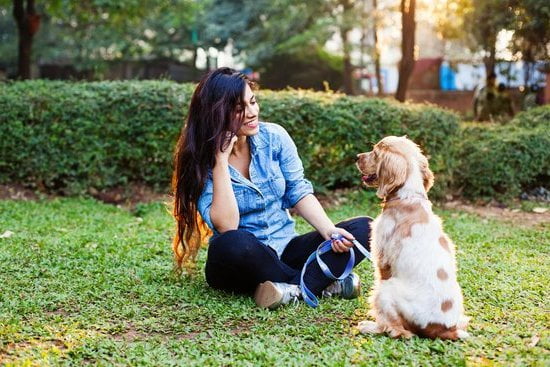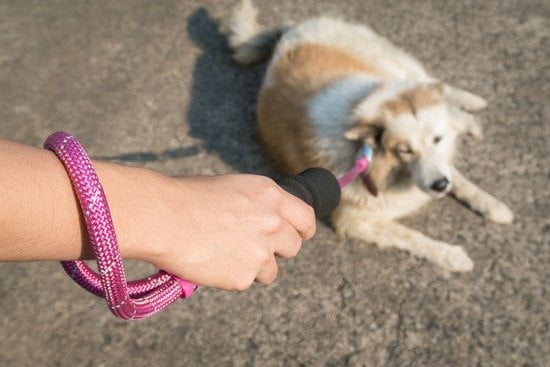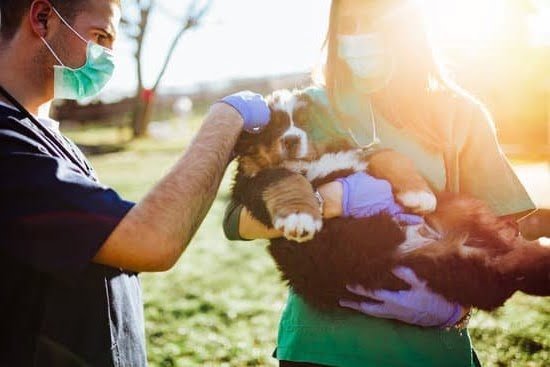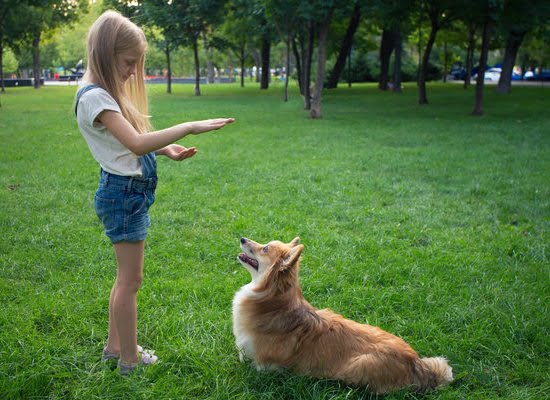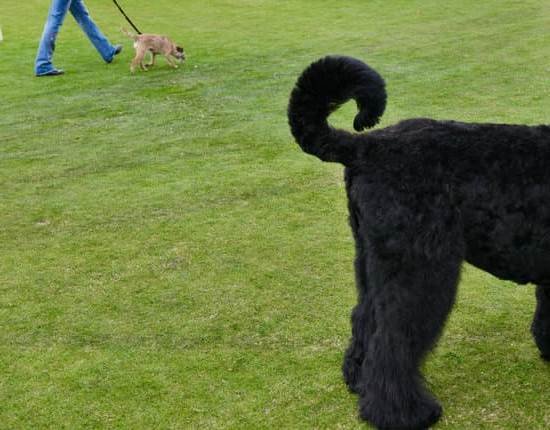Potty training is an essential aspect of owning a small dog, as it promotes cleanliness, eliminates unwanted accidents, and strengthens the bond between owner and pet. Small dogs have different needs when it comes to their bathroom habits compared to larger breeds, making it crucial to understand and cater to their specific requirements.
In this article, we will explore the importance of potty training for small dogs and provide you with practical tips and techniques to successfully train your furry companion.
Small dogs have smaller bladder capacities, meaning they cannot hold urine for as long as larger breeds. This makes timely potty breaks even more crucial for them. Additionally, certain factors such as age, diet, activity level, and overall health play a role in determining how often your small dog needs to relieve themselves. Understanding these factors will allow you to establish a consistent routine that meets your dog’s individual needs.
Creating a designated potty area in your home or apartment is another pivotal step in successfully potty training your small dog. By choosing the right location and setting up the area with appropriate supplies like pee pads or fake grass, you provide them with a familiar spot to do their business. Encouraging your small dog to use this designated potty area reinforces good habits and prevents accidents from occurring elsewhere in your living space.
By implementing positive reinforcement techniques, such as rewarding your small dog with treats and praise for successful bathroom breaks, you can further strengthen their understanding of where they should go to relieve themselves. However, it is equally important to avoid punishment or scolding for accidents as this can create fear or setbacks in the training process. Consistency in rewarding good behavior is key to reinforcing positive habits throughout the potty training journey.
Potty training may seem like a daunting task at first but armed with knowledge on the unique needs of small dogs and employing effective techniques tailored specifically for them; you can navigate through this process successfully. So let’s dive into the different aspects of potty training your small dog and get ready to celebrate their journey towards cleanliness and a harmonious bond between you and your beloved companion.
Understanding your small dog’s bathroom needs
When it comes to potty training your small dog, understanding their bathroom needs is crucial. Small dogs have different bladder capacities compared to larger breeds, which means they may need to relieve themselves more frequently. Additionally, several factors can affect a small dog’s need to go potty. By understanding these factors and creating a routine based on their unique needs, you can set your small dog up for successful potty training.
One key difference between small and large dogs is bladder capacity. Small dogs generally have smaller bladders and therefore cannot hold their urine for extended periods like larger dogs can. As a result, they may need to go outside or use their designated potty area more frequently throughout the day. It’s important to keep this in mind when establishing a potty schedule for your small dog.
In addition to bladder size, several other factors can influence how often your small dog needs to go potty. These factors include age, activity level, diet, and overall health. Puppies, for example, have less bladder control and may need more frequent potty breaks compared to adult dogs.
Similarly, highly active small dogs may have a higher metabolism that causes them to eliminate waste more often. By considering these factors and observing your small dog’s behavior, you can determine how often they need access to their designated bathroom area.
To cater to your small dog’s specific bathroom needs, it is important to establish a consistent routine that includes regular bathroom breaks throughout the day. This routine should be based on their individual needs as well as any guidance from your veterinarian regarding their diet and health condition. By sticking to a regular schedule, you are setting clear expectations for your small dog and teaching them when it is appropriate to relieve themselves.
To help you keep track of your small dog’s bathroom habits, consider using an ordered list:
- Observe and note their bathroom habits to identify any patterns or consistency.
- Consult with your veterinarian to determine the optimal frequency of potty breaks based on your dog’s size, age, and health status.
- Create a schedule that includes regular bathroom breaks at appropriate intervals throughout the day.
By understanding your small dog’s bathroom needs and establishing a consistent routine, you will be well on your way to successfully potty training your furry friend.
Creating a designated potty area in your home or apartment
Choosing the right location for the potty area
When creating a designated potty area for your small dog in your home or apartment, it is crucial to choose the right location. The ideal spot should be easily accessible for your dog and convenient for you to clean up.
Consider selecting an area that can be easily sanitized, such as a bathroom or laundry room with tile or linoleum flooring. Carpets and rugs can be more challenging to clean and may retain odors, so it’s best to avoid them if possible.
Another important factor to consider when choosing the location is privacy. Dogs, just like humans, appreciate their privacy during bathroom breaks. Opt for an area that offers some seclusion, such as a corner of a room or behind a partition. This will help make your small dog feel more comfortable and secure while doing their business.
Setting up the area with appropriate supplies (pee pads, fake grass, etc.)
Once you have selected the perfect location for your small dog’s potty area, it’s time to set it up with the appropriate supplies. There are several options available, including pee pads and artificial grass patches specifically designed for dogs.
Pee pads are absorbent mats that can be placed on the floor of your chosen potty area. They are convenient because they soak up liquid waste, making cleanup much easier. Some pee pads even contain pheromones that attract dogs and encourage them to use them for potty breaks.
Artificial grass patches mimic outdoor grass and can provide a more natural experience for your small dog. These patches typically have a tray or base that collects urine and can be easily emptied and rinsed out.
Whichever option you choose, make sure to place enough supplies in the designated potty area to accommodate your dog’s needs throughout the day.
Encouraging your small dog to use the designated potty area
Introducing and encouraging your small dog to use the designated potty area is an essential part of their potty training journey. Start by regularly bringing your dog to the area after meals, waking up from naps, or prolonged periods of play. This will help them establish a routine and associate the spot with bathroom breaks.
To encourage your small dog to use the designated area, consider using positive reinforcement techniques. Give them praise and treats whenever they successfully use the designated potty area. You can also bring a familiar scent, such as a used pee pad or artificial grass patch, from previous successful potty breaks to help them recognize the spot’s purpose.
Avoid scolding or punishment if accidents occur outside of the designated area. This may cause fear or confusion in your small dog and hinder their progress. Instead, redirect them gently to the appropriate spot and reward them when they use it correctly.
By choosing the right location, setting up appropriate supplies, and providing positive reinforcement, you can effectively create a designated potty area for your small dog that promotes successful potty training.
Establishing a consistent potty schedule and routine
Setting regular bathroom breaks based on your dog’s needs
One of the key aspects of successful potty training for small dogs is establishing a consistent schedule and routine. Small dogs have smaller bladders compared to their larger counterparts, which means they often need to relieve themselves more frequently. It is crucial to understand your small dog’s individual bathroom needs and set regular bathroom breaks accordingly.
Observe your small dog’s behavior and take note of how often they tend to go potty. Most small dogs benefit from being taken outside or to their designated potty area at least every 2-4 hours during the day. Puppies or dogs with less bladder control may require even more frequent potty breaks.
In addition to time-based breaks, pay attention to cues such as sniffing around, restlessness, or circling, as these are indications that your small dog may need to go potty soon. By setting a consistent schedule that aligns with your dog’s natural tendencies and habits, you can effectively prevent accidents and help them develop good bathroom habits.
Using cues and commands to signal bathroom time
To further establish a routine for potty training, it is helpful to use cues or commands that signal bathroom time to your small dog. This helps them associate a specific action or phrase with the act of going potty, making it easier for them to understand what is expected of them.
Choose a simple word or phrase like “go potty” or “outside” and consistently use it before taking your small dog out. Repeat the cue several times each time you accompany them to their designated potty area or when they show signs that they need to go. Eventually, they will start associating the cue with going potty and might even respond by heading straight for the door when they hear it.
Remember that consistency is key when using cues or commands. Use the same tone of voice and say the cue word or phrase every time to ensure clear communication. Over time, your small dog will learn to understand and respond to the specific signal for potty time.
The importance of maintaining a routine for successful potty training
Consistency is vital in all aspects of potty training, including establishing a schedule and routine. Dogs thrive on routines, and by maintaining a consistent schedule, you can reinforce good potty habits and help your small dog understand where and when they should go.
Stick to the established bathroom breaks as closely as possible, even on weekends or during busy days. Changing the schedule frequently can confuse your small dog and make it harder for them to grasp the concept of potty training. The more consistent you are with your routine, the faster your small dog will develop reliable bathroom habits.
Additionally, try to keep other daily activities consistent as well. Feeding times, exercise schedules, playtime routines – all these factors contribute to your small dog’s overall well-being and can impact their bladder control. A stable routine creates an environment that supports successful potty training for your small dog.
Positive reinforcement techniques for effective potty training
Positive reinforcement techniques are crucial for effective potty training with small dogs. By using positive reinforcement, you can create a positive association between bathroom behavior and rewards, which will help your small dog understand what is expected of them and encourage them to repeat the desired behavior.
One of the most effective ways to reinforce good bathroom behavior is through treats and praise. Whenever your small dog successfully goes to the designated potty area or outside, immediately reward them with a small treat and lots of verbal praise. This will strengthen the connection between the act of going to the bathroom in the appropriate location and receiving a reward.
It’s important to note that punishment or scolding for accidents should be avoided. Negative reinforcement can lead to fear and anxiety, making it more difficult for your small dog to understand where they’re supposed to go. Instead, focus on catching them in the act of using the correct spot or taking them outside at appropriate times.
Consistency is key when using positive reinforcement techniques. Make sure everyone in your household is on board with rewarding good behavior consistently. This will help reinforce positive habits and make it easier for your small dog to understand what is expected of them.
| Positive Reinforcement Techniques | Description |
|---|---|
| Rewarding with treats | Give a small treat immediately after your small dog uses the designated potty area or goes outside. |
| Praising verbally | Lots of enthusiastic verbal praise (e.g., “Good job.” or “You’re such a smart pup.”) helps reinforce positive bathroom behavior. |
| Avoiding punishment | Refrain from scolding or punishing your small dog for accidents as it can create fear or anxiety. |
| Consistency among family members | Ensure that everyone in your household consistently rewards good behavior, reinforcing positive habits across the board. |
Supervising and monitoring your small dog’s potty training progress
- Keep a close eye on your dog’s behavior: It’s essential to pay attention to your small dog’s behavior and body language as these are indicators that they may need to go potty. Some signs to watch out for include restlessness, sniffing the ground, circling, or squatting. By being vigilant, you can quickly identify these cues and take your dog to their designated potty area in time.
- Use crate training and confinement: When you are unable to supervise your small dog closely, such as when you’re at work or sleeping at night, crate training or confining them to a small space can be helpful in avoiding accidents. Dogs naturally do not like soiling their living spaces if given the proper amount of room within the crate or confined area.
However, it is crucial not to leave them in the crate for extended periods without breaks as this can lead to discomfort and anxiety. - Track progress and adjust training approach: Potty training progress varies from dog to dog, so it is important to monitor your small dog’s progress regularly. Keep a record of successes and accidents in order to identify any patterns or areas where adjustments may be needed in your training approach.
For example, if accidents occur more frequently after certain activities or during specific times of the day, you may need to increase bathroom breaks during those periods.
By closely supervising and monitoring your small dog’s potty training progress, you can effectively address any setbacks or accidents that occur along the way. Remember to remain patient and consistent throughout the process while providing positive reinforcement for good behavior. With time and effort, your small dog will become successfully potty trained, leading to a cleaner and happier living environment for both you and your furry friend.
Dealing with accidents and setbacks during the potty training process
Accidents are a normal part of the potty training process, especially for small dogs who may have smaller bladders and less control. It’s essential to handle accidents calmly and address any setbacks that occur. By following a few key steps, you can effectively deal with accidents and help your small dog stay on track with their potty training.
Cleaning up accidents properly is crucial to remove any lingering odors that may attract your dog to use the same spot again. Thoroughly clean the soiled area using an enzymatic cleaner specifically designed to eliminate pet odors. Regular household cleaners may not be effective in completely removing the scent that only dogs can detect.
It’s important to identify potential reasons for accidents as they can indicate underlying health issues or anxiety. If your small dog consistently has accidents despite following a potty training routine, it may be necessary to consult with a veterinarian to rule out any medical conditions. Additionally, some dogs may experience anxiety related to their potty training, which can lead to accidents. In these cases, it might be helpful to consult with a professional dog trainer or behaviorist.
Patience and persistence are key when dealing with setbacks in potty training. Every dog learns at their own pace, and it’s important not to get discouraged by occasional accidents or regression in progress. Stay consistent with the established routine and positive reinforcement techniques outlined earlier in this article. Remember that consistency is key in reinforcing positive habits.
When accidents occur, avoid punishment or scolding your small dog as it only creates fear or confusion, making the potty training process more challenging. Instead, redirect your dog’s attention to the designated potty area where they should be eliminating and provide plenty of positive reinforcement when they use it correctly.
Dealing with accidents can be frustrating, but it’s important to remain patient and understanding throughout the potty training journey. By addressing setbacks promptly and providing consistent guidance, your small dog will eventually develop the proper habits and become successfully potty trained.
| Steps to Deal with Accidents | Explanation |
|---|---|
| Clean up accidents properly | Thoroughly clean the soiled area using enzymatic cleaner to eliminate odors |
| Identify potential reasons for accidents | Ruling out medical conditions and addressing anxiety-related issues |
| Show patience and persistence | Stay consistent with routine and positive reinforcement techniques, avoiding punishment or scolding |
Tips and tricks for successful potty training specific to small dog breeds
Small dog breeds have unique characteristics and challenges when it comes to potty training. Understanding these specific needs and tendencies can greatly contribute to a successful training experience. Here are some tips and tricks that can help you effectively potty train your small dog breed.
Firstly, it is important to recognize the breed-specific challenges and tendencies for potty training. For example, toy breeds like Chihuahuas or Yorkies may have smaller bladders and therefore need more frequent bathroom breaks compared to small breeds with higher energy levels like Jack Russell Terriers or Shih Tzus. Adjusting your expectations and strategies based on your dog’s breed will set you up for success.
When potty training small dog breeds, it is crucial to tailor the training techniques to suit their individual personality and temperament. Some small dogs may be more independent or stubborn, while others may be more eager to please. Understanding your dog’s unique traits can help you choose the right approach – whether it’s using positive reinforcement, clicker training, or other methods that work best for them.
Consistency is key in potty training any dog, but especially for small breeds. Establish a clear routine and stick to it religiously. Small dogs thrive on predictability, so having designated bathroom breaks at specific times throughout the day will help them learn faster. Using commands or cues like “go potty” consistently can also signal bathroom time effectively.
It’s worth noting that accidents do happen during the potty training process. When accidents occur, avoid punishment or scolding as this can create fear or regression in your small dog. Instead, use positive reinforcement techniques by rewarding good behavior with treats and praise consistently. This will reinforce positive habits and motivate them to continue using the designated potty area.
Conclusion
In conclusion, successfully potty training your small dog is an important milestone that should be celebrated. Throughout the training process, you have established a strong bond with your furry companion and helped them develop good habits that will benefit both of you in the long run. By understanding your small dog’s needs, creating a designated potty area, establishing a consistent routine, and using positive reinforcement techniques, you have set the foundation for a well-potty trained dog.
Reflecting on the progress made during the potty training journey is crucial. Take this time to appreciate how far your small dog has come from having accidents in the house to now consistently using their designated potty area. Recognize the effort and patience it took from both you and your pet to achieve this success. This shared accomplishment will strengthen the bond between you and your small dog and enhance the overall trust and understanding between you.
A well-potty trained small dog brings numerous benefits to both owners and their pets’ overall well-being. Not only does it provide convenience by minimizing accidents in the house, but it also improves hygiene and cleanliness in your living space. Furthermore, successful potty training instills confidence in your small dog as they learn to understand their body’s signals, resulting in increased independence.
The journey may not always be smooth sailing, as setbacks and accidents are bound to happen. It is crucial to remain patient and persistent during these times, understanding that every dog learns at its own pace. By addressing any underlying issues or health concerns promptly and continuing with consistency in training methods, you can overcome setbacks together.
Celebrating your small dog’s successful potty training journey is more than just a celebration of their newfound cleanliness – it is a celebration of partnership, hard work, and dedication. By recognizing their achievements throughout this process, you are fostering a positive environment that will encourage further milestones in obedience training and beyond.
Frequently Asked Questions
Are small dogs harder to potty train?
Potty training small dogs can be challenging, but it is not necessarily harder than training larger dogs. The main difference lies in the size of their bladder and their ability to hold urine for a longer duration. Since small dogs have smaller bladders, they may require more frequent trips outside to relieve themselves compared to larger breeds.
Additionally, small dogs tend to have a higher metabolism, which means they might need to eliminate more frequently throughout the day. However, with consistency, positive reinforcement, and patience, small dogs can be successfully potty trained just like any other dog breed.
How long does it take to potty train small dogs?
The time required to potty train a small dog can vary depending on various factors such as breed, age, temperament, and consistency in training efforts. Generally speaking, it typically takes anywhere from a few weeks to several months to fully potty train a small dog.
Younger puppies may take longer as their bladder control is still developing, while older dogs who have developed bad habits may also require additional time and effort. Consistency in taking them outside at regular intervals, using positive reinforcement techniques like treats and praise when they eliminate in the appropriate spot, and effectively managing accidents can greatly expedite the potty training process for small dogs.
Do small breed dogs take longer to potty train?
It is not accurate to state that small breed dogs inherently take longer to potty train compared to larger breeds. While there are certain characteristics associated with smaller breeds that might make potty training more challenging (such as their smaller bladders), the time it takes for any dog to become fully potty trained primarily depends on individual factors rather than size alone.
Small or toy breeds might require more frequent bathroom breaks due to their bladder size, but with consistent training efforts and appropriate management techniques such as crate training and regular schedules for feeding and bathroom breaks, these challenges can be overcome effectively. Ultimately, each dog has its own unique personality and learning pace that will influence how quickly they grasp the concept of potty training, regardless of their size.

Welcome to the blog! I am a professional dog trainer and have been working with dogs for many years. In this blog, I will be discussing various topics related to dog training, including tips, tricks, and advice. I hope you find this information helpful and informative. Thanks for reading!

